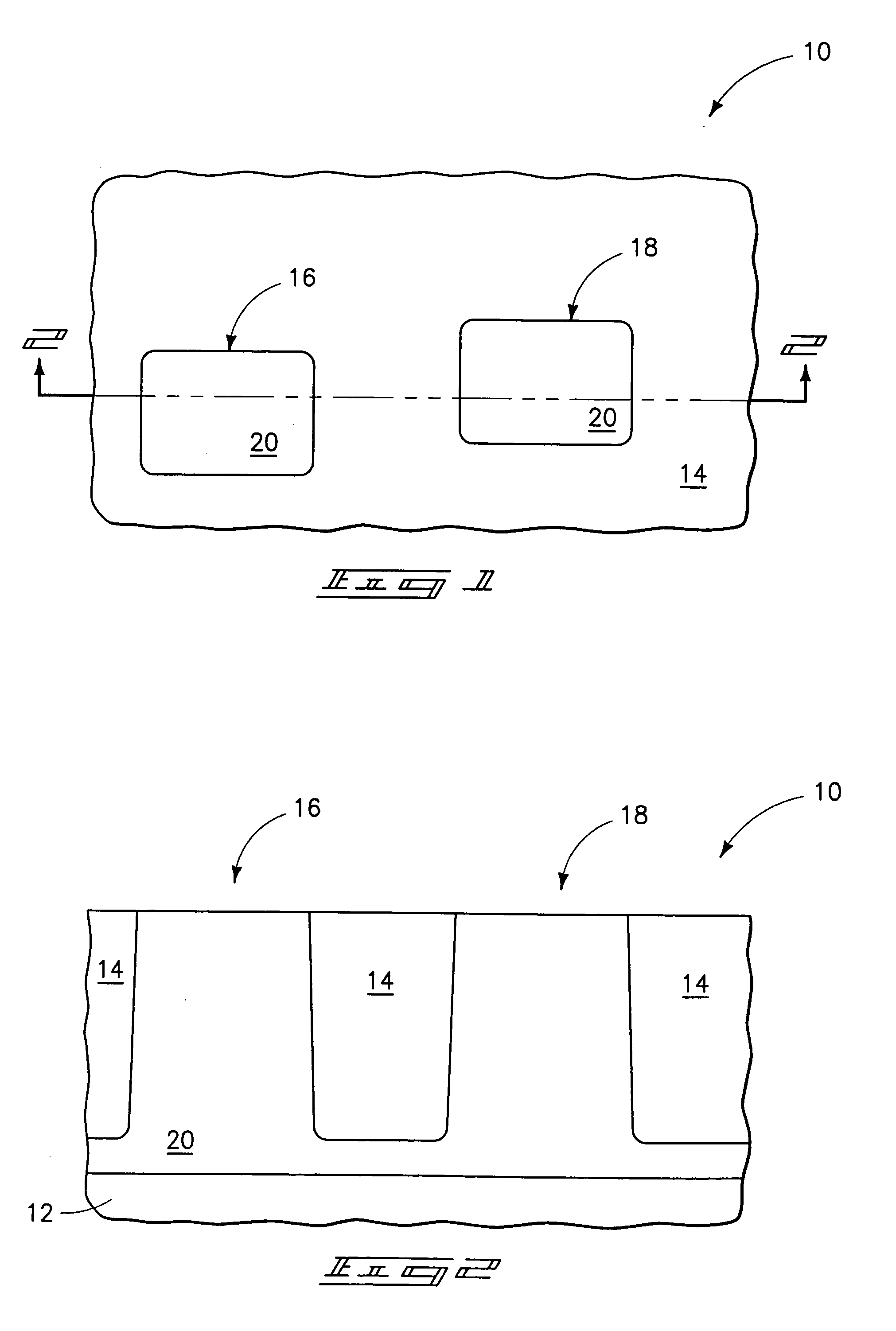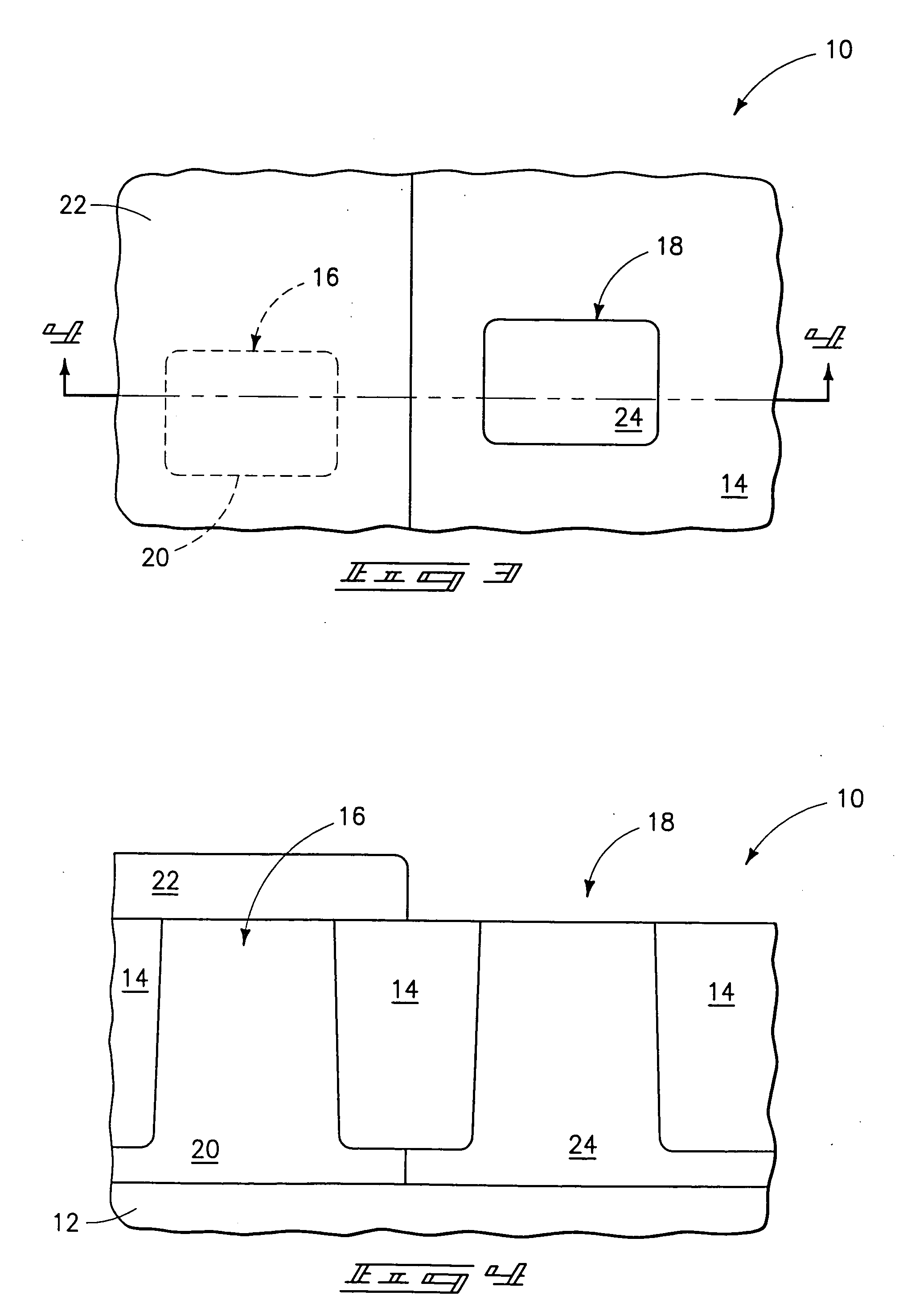Methods of forming field effect transistors on substrates
a field effect transistor and substrate technology, applied in the direction of transistors, semiconductor devices, electrical equipment, etc., can solve the problems of affecting materials, affecting the performance of transistors,
- Summary
- Abstract
- Description
- Claims
- Application Information
AI Technical Summary
Benefits of technology
Problems solved by technology
Method used
Image
Examples
Embodiment Construction
[0033] This disclosure of the invention is submitted in furtherance of the constitutional purposes of the U.S. Patent Laws “to promote the progress of science and useful arts” (Article 1, Section 8).
[0034] Exemplary preferred methods of forming a field effect transistor on a substrate are described with reference to FIGS. 1-20. By way of example only, the field effect transistor might be p-type or n-type. Regardless, the field effect transistor will comprise a pair of conductively doped source / drain regions, a channel region received intermediate the pair of source / drain regions, and a transistor gate received operably proximate the channel region. An exemplary preferred embodiment method is described in forming both an n-channel field effect transistor and a p-channel field effect transistor on a substrate, although methods in accordance with the invention might be utilized to fabricate only a single conductivity type field effect transistor.
[0035] Referring to FIGS. 1 and 2, an ...
PUM
 Login to View More
Login to View More Abstract
Description
Claims
Application Information
 Login to View More
Login to View More - R&D
- Intellectual Property
- Life Sciences
- Materials
- Tech Scout
- Unparalleled Data Quality
- Higher Quality Content
- 60% Fewer Hallucinations
Browse by: Latest US Patents, China's latest patents, Technical Efficacy Thesaurus, Application Domain, Technology Topic, Popular Technical Reports.
© 2025 PatSnap. All rights reserved.Legal|Privacy policy|Modern Slavery Act Transparency Statement|Sitemap|About US| Contact US: help@patsnap.com



